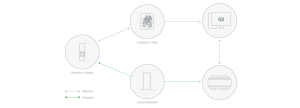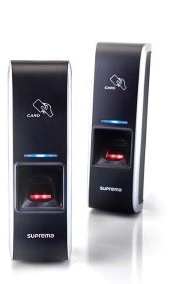 Whether it’s unlocking a smartphone, gaining secure access to a building, or at airport security, biometric technology is having an increasing impact on our everyday life. Many businesses now use biometrics as a way to authenticate users and safeguard their enterprise. Our system integrates seamlessly with Suprema Bio Entry, Bio Entry Plus, Bio Lite N2, and Face Station 2 devices, literally putting security at your fingertips.
Whether it’s unlocking a smartphone, gaining secure access to a building, or at airport security, biometric technology is having an increasing impact on our everyday life. Many businesses now use biometrics as a way to authenticate users and safeguard their enterprise. Our system integrates seamlessly with Suprema Bio Entry, Bio Entry Plus, Bio Lite N2, and Face Station 2 devices, literally putting security at your fingertips.
Typical access control systems use a proximity card or tag to identify a user. While this what you have type of credential is adequate in most cases, it is easily misplaced, lost, or stolen. A second authentication factor can be implemented that requires the user to also enter a PIN code. This combination uses both what you have and what you know, and while it increases security, a PIN can still be forgotten or passed on to someone else. Biometrics introduce the what you are factor and are immune to these problems by using fingerprints or facial patterns that are unique to an individual.
How it Work
Enrolment is both quick and easy. Users scan their fingerprint (or face) at an enrolment reader. The reader uses the scanned data to create a biometric template, including a card number, which it sends to the Protege GX Server. The device then sends this template to any other Suprema readers that are attached to the system so the user only needs to enrol once.
integration also allows a second finger-print template to be stored against a user. This is typically used as a backup in case the first finger is damaged, however it can also be used to provide a duress function.
Readers are connected using a standard open Wiegand interface. When a user scans their finger (or face) at any of the connected readers, the reader validates their details against the template stored and sends the corresponding card number to Protege GX. Protege GX then authenticates the user based on their access, and unlocks the door.
Biometric readers can be used on their own where only a single factor of authentication is required. This can be convenient for end users as they always have their credentials on hand. Most modern biometric readers include some kind of life detection to ensure that a finger that has been removed cannot be used. For added security, a biometric reader can be combined with an access control reader to require dual authentication (card and biometric credential).

